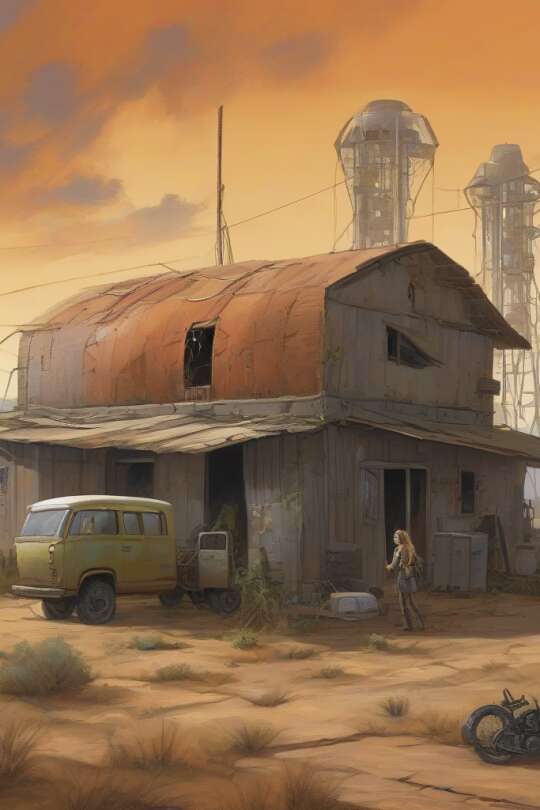
Waking the Fields
About the Story
A tight, tense atmosphere hangs over a drought-struck village where Kira, a former hydroponic technician, stole heritage seed to feed her people. When the salvaged module destabilizes the land and sickness spreads, she must return the device and undergo a living graft to mediate repair, risking her freedom to mend what she broke.
Chapters
Related Stories
Saltbound Compass
In a salt-scarred post-apocalyptic world Mira, a young mapmaker, sets out from her village to find a fabled Well that can restore water. She is given a brass bird and taught to read the city's machines. Against Harrow, who hoards routes, she fights, learns caretaking, and returns with water and a new duty.
Brine and Sunlight
In a drowned coastal city, former plant tech Aisha defies a water baron to revive an abandoned desalination intake. With a teen scavenger, an old electrician, and a squeaky service robot, she faces raids and sabotage to bring free water to the rooftops—and writes a new charter for survival.
Ash & Root
Ash & Root follows a reluctant agronomist, a scavenger, and an orphan as they find a buried seed repository that requires a living human context to awaken. In a tense standoff with a resource band, they attempt an experimental distributed memory upload, forcing a costly, personal reckoning as new shoots push through ash.
Where the Green Remembered
In a salt-bitten harbor after the fall, a young mechanic named Jules risks everything to reclaim lost seeds and water for his community. Through bargains with a consortium and a raider leader, alliances and betrayals, he builds a fragile network that learns to grow again.
Breath of Ashmere
In a drowned coastal ruin, boatwright Rin scavenges and fights to restore clean water. Given a fragile living filter and an unlikely drone companion, she confronts the Valves who hoard desalination. A dangerous, human story of repair, small miracles, and community resilience.
Frequently Asked Questions about Waking the Fields
What is the central conflict in Waking the Fields between immediate survival and long-term ecological stewardship ?
The central conflict pits Hearthstead’s urgent hunger against the Seedhold’s slow, precautionary stewardship. Kira must choose between stealing seeds for quick relief or committing to processes that protect future ecosystems.
Who is Kira and what motivates her decisions throughout the story ?
Kira is a former hydroponic technician haunted by an earlier mistake. Loyalty to her community and fear of failing them drives her to drastic action, then to seek reparative solutions once harm becomes clear.
What role do the Seedhold and the activation module play in the plot ?
The Seedhold is a living archive that guards heritage seed and stabilization protocols. The activation module coordinates pollinators and microbial timing; stolen partially, it becomes the catalyst for ecological collapse.
How does the stolen activation module destabilize Hearthstead’s ecology and people ?
Without the Seedhold’s distributed network, the module’s blunt pulses cause aggressive plant growth, disrupted pollinator rhythms and volatile soil chemistry, triggering sickness, social fracture and resource crises.
What is the grafting process and why does Kira undergo it in the final chapter ?
The graft is a technical, bioconductive interface linking a steward to the Seedhold’s fungal lattice. Kira accepts a limited graft to mediate stabilization, trade mobility for sensory access, and teach safer reintroduction.
How does Waking the Fields explore accountability, governance, and ecological repair ?
The story examines how technical knowledge must pair with social systems: stewardship, shared governance and training. It follows repair as a collective, ongoing practice rather than a single heroic fix.

